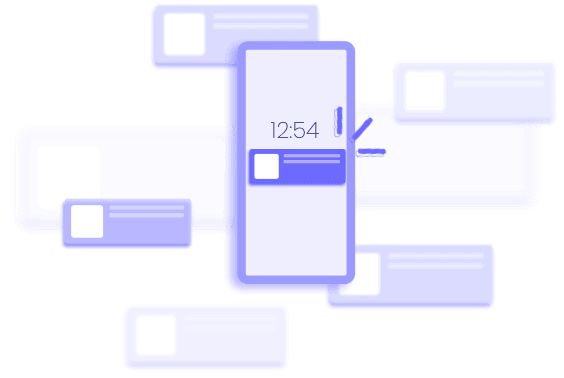Web push notifications are becoming the most sought-after tool for advertisers today.
But how to best monetize your site? Explanations…
How do I integrate Web Push notifications on my site?
Publishers looking for other ways to monetize their website may find push notifications an easy way to monetize further.
Web push notifications don’t take up any real space on your website, no pixels are moved down or spared by the push notification’s position.
They are integrated with a simple beacon that engages users via a small pop-up asking for their consent to receive advertisements. Once a user has opted-in and is integrated into the database, the publisher can choose to collect a lifetime revenue on the ad revenue generated by that user or collect a one-time “conversion” rate for that user’s opt-in.
The integration of push notification ad units is similar to that of a popunder ad unit, simply add a JavaScript code to your website header to ensure that users can opt-in across your website, then add a service worker file that will communicate with the browser and trigger the push notification permission box.
Publishers can also choose to redirect users to pre-built authorization requests, which will give the publisher’s website a distinct identity and result in a higher conversion rate from visit to opt-in.
Which sites do Web Push notifications work best with?
It is obvious that any website with real traffic can generate push opt-in users.
Everything publishers post on their website can be clicked on at some point, but some websites convert their visitors into push opt-in users more easily than others.
The key thing to note is not necessarily the vertical of the website, but rather how a user engages via the opt-in box and the immediate effect that the wrong type of ad delivery can introduce.
You need to monetize push users without over-engaging them. If done right, users can be invited to sign up via a form limiting the number of ads per day, thus guaranteeing demand from premium push advertisers.
Publishers who are creative enough in getting users to use the first permission box will generate more opt-ins and potential revenue via Web Push notification advertising.
What type of ads will Push Web users receive?

Classic web push notification campaigns can include any type of information and industry, such as finance, entertainment, e-commerce, lead generation and more. Users can receive web push notifications with a banner in addition to a title and description text, or a plain text push with an image or icon.
Some publishers find that user monetization impacts their site if it is done incorrectly or too aggressively.
You need to make sure you first provide clean ads that are clearly branded, personalized and targeted, that follow strict ad content guidelines.
In addition, a well-built algorithm, will even retain ads from certain users because of their metrics which may include click-through rate, conversion rate, viewability and more. An algorithm will learn to serve the highest paying ad first, thus increasing the publisher’s eCPM and revenue, and thus effectively monetizing push users.
How to avoid ad fatigue?

To minimize user frustration and churn, it is important to consider the following points:
- The frequency of sending notifications remains the main factor to control. For example, sending one push notification per day will not irritate your users. On the other hand, sending 10 notifications per day may displease your users, especially if the content is repetitive and does not justify the urgency. For example, for media that send real-time information such as the results of a soccer match or the winner of a presidential election, it is justified to send several notifications per day. At OutPush, we recommend to send between 3 and 5 notifications per day.
- Respecting a good mix between sponsored content and content specific to the site may seem obvious but requires a certain effort from the site editor. Indeed, it will be necessary to constantly create quality content and notify its users when a new article is published. In order to achieve this, you must first focus on the creation of regular and relevant content.
- Varying the content and justifying the urgency of the notification can help users get bored of your notifications less quickly. For example, if you have written an article that summarizes the results of the last World Cup final match, it is appropriate to send it the same day or the next day. The title of the notification is therefore very important so that the user understands the urgency of your message.
Why choose web push notifications?
- They are relevant: scheduling and matching of ads with the best audience, to keep users interested and ads converting.
- Cost effective: your budget is spent on optimizing conversions and sales through pay per click.
- Allow for continuous improvement: create various content and then test it to evaluate its performance and improve it.
- They are universal: send advertising content to all types of devices: computer, tablet and mobile.
- They are respectful: users receive the most relevant ads in a non-aggressive way.
→ Join the best web push notification network 

Antoine Henrion
Co-founder
Antoine is the Co-Founder of OutPush, a platform that helps website publishers monetize through web push notifications. Before OutPush, Antoine launched a cheap travel platform, Hope Flights, with more than 50,000 members in France. Passionate about travel and new technologies, he is always listening to his customers and is always available. Prior to launching his company, Antoine was the head of Operations for the French startup Chauffeur-Privé, recently acquired by the Daimler-Mercedes group which has now been renamed Free Now (via Kapten).

